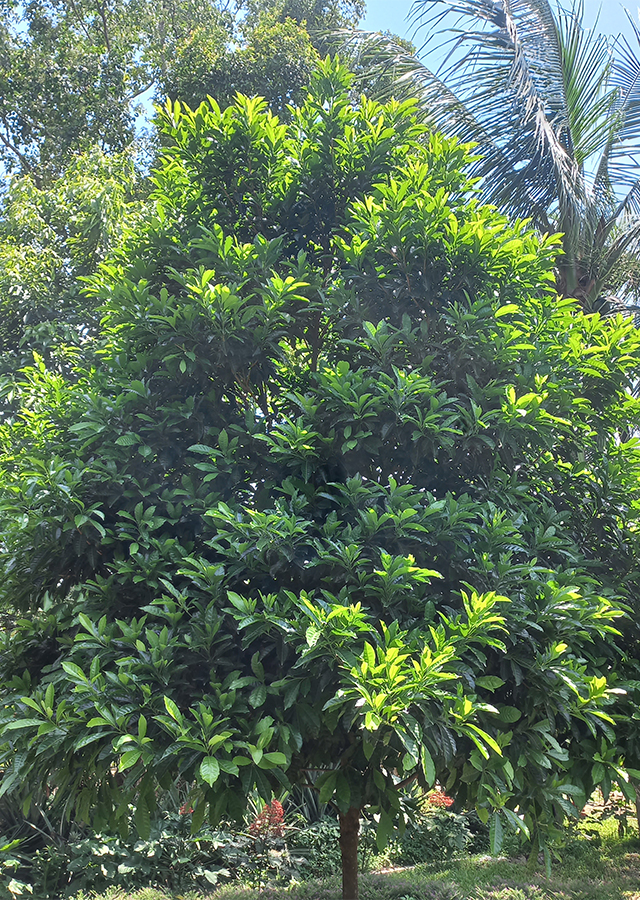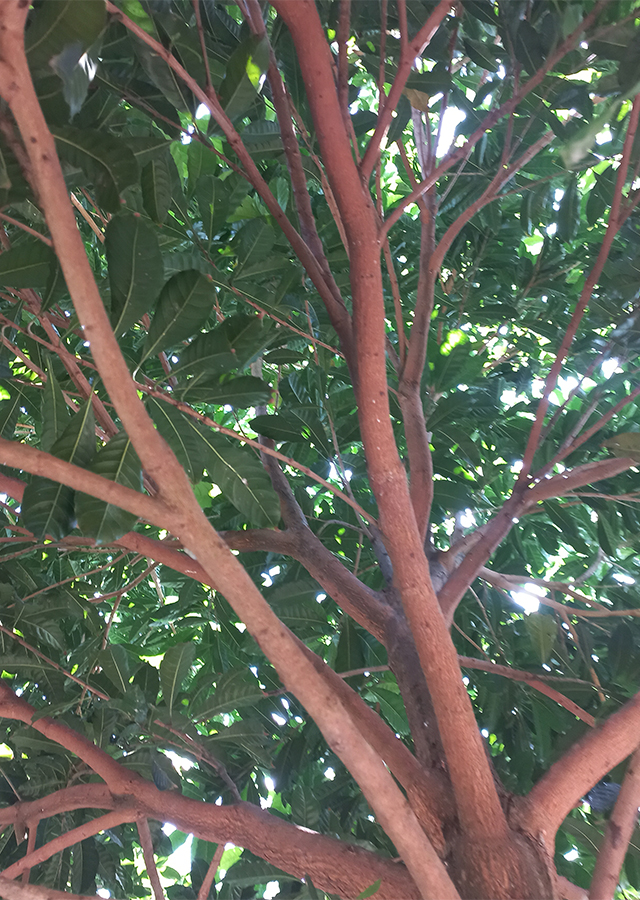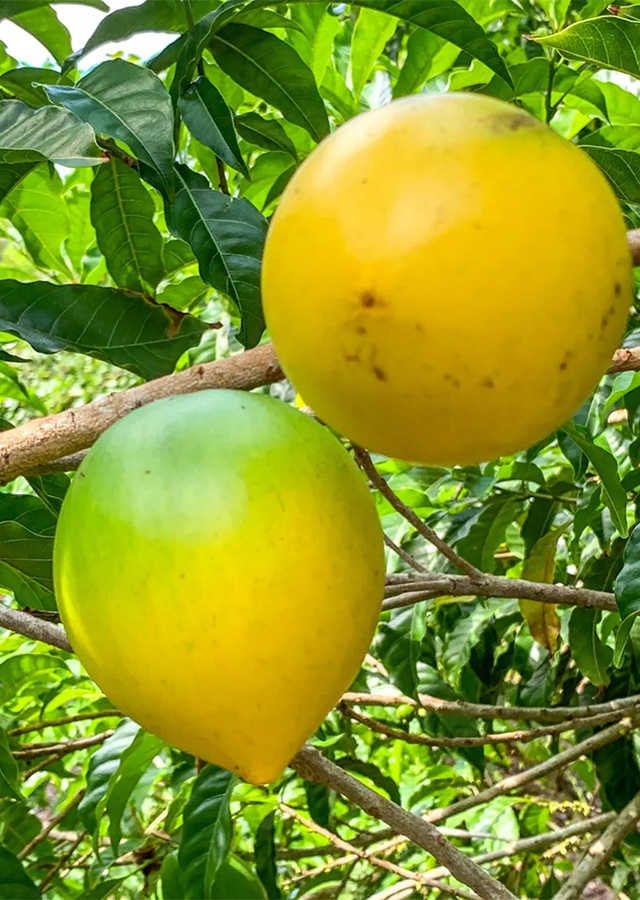Traditional Herbs from Pouteria caimito
cough
- Take ripe abiu fruit, wash it until clean.
- Cut the abiu fruit so it is easy to eat.
- Eat abiu fruit to treat coughs.
ulcers
- Take enough abiu sap .
- Apply sap to the boil.
What is Pouteria caimito Looks like??



Parts of Pouteria caimito that could be used
- Leaf
- Fruit
- Latex
Pouteria caimito Distribution
Abiu or Pouteria caimito is an exotic tropical fruit plant that is believed to originate from the upper reaches of the Amazon River (South America) and grows wild in the lower eastern part of the Andes from Southwest Venezuela, Para, Guyana and Brazil to Colombia, Peru and Ecuador. Abiu was well known in the pre-Columbian Amazon where this fruit-bearing plant was considered an important plant component of Native American home gardens as well as orchards. Its popularity continued into the colonial period. Today, it has spread well in other tropical areas and has been widely cultivated, especially in domestic gardens, as a fruit plant. Abiu fruit can be consumed fresh or processed (such as ice cream and juice), where this fruit is rich in minerals, essential vitamins and is a source of fiber and energy. Intake of abiu fruit can also provide various health benefits. Apart from that, this plant also produces dense, heavy and hard wood, and has value as a construction material.Agroecology of Pouteria caimito
Abiu is generally found growing in forests, especially in seasonally inundated areas, and on the coast, at altitudes ranging from sea level to 1,500 m above sea level. It is a tropical fruit plant that is hot, wet, and requires a humid and warm climate all year round. This species grows well in full sun, in fertile, moist soil. Its growth also likes acidic soil. However, the abiu plant is not tolerant of frost.
Morphology of Pouteria caimito
- Straight stems, white or reddish gum.
- Leaves are arranged alternately (alternate), elliptical to oval-lanceolate, with sizes varying from 10 - 20 cm, 3 - 6 cm wide, green, leaf veins pinnate, pointed short at the apex, sometimes long tapering at the base, leaf edges are wavy. Petioles are short, green.
- Flowers are small, hermaphroditic, appear singly or in groups (about 2 - 5 flowers) from the leaf axils, growing on slender and elongated shoots. Each flowering branch produces around 20-280 petals (petals) numbering four to five, white, cream to greenish, cylindrical crown tube about 5 mm long. It has four overlapping petals (sepals) and is light green in color. The flowers open in the morning and remain open for about two days.
- The berries, have varying shapes, from round to oval, smooth and green. when young and turns bright yellow with smooth skin when ripe. The flesh of the fruit is whitish and translucent (clear), slimy, soft in texture, runny like cream or jelly, tastes sweet with the aroma of rambutan. Sometimes it has a short nipple at the bottom of the fruit. Fruit that is not fully ripe produces latex that sticks to the lips. Has thin skin that bruises easily. The fruit stalk is short and gummy.
- There are one to four seeds in each fruit, oval in shape, dark brown to black in color with a pale hilum on one side. The seeds are covered by a thin layer of pulp.
Cultivation of Pouteria caimito
- Generative propagation of plants through seeds. Once extracted from the fruit, the seeds cannot survive for more than a few days and therefore should be planted as soon as possible into a clean, well-drained medium. The seeds will germinate in 15 to 20 days. Seedlings It can be planted in the garden when it reaches 6-8 months after sowing. The spacing is 6 x 5 m. One year later, the lower branches are pruned and the plants will start to bear fruit 3 years and significantly in 5 years.
- Propagation can also be done vegetatively using grafting techniques. The grafted abiu tree will bear fruit between 1-2 years after being planted in the garden.
Pouteria caimito, more details :
Chemical Content of Pouteria caimitoPalmitic acid, α-copaene, hexadecy acetate, taraxerol, ß-sitosterol, lupeol, a-amyrin, erythrodiol, tetracyclic triterpene Dammaremdiol II, 1-(2-Hydroxyethyl)-1,2,4-triazole, 5-hydroxy methyl furfural, 1-methyl-5-fluorouracil, trans-geranylgeraniol, squalene, spinasterol, alkaloids, terpenoids, flavonoids, lapachol, phenylpropaoid, and benzenoid.
Benefits of Pouteria caimito
Treats coughs, colds, bronchitis, various lung disorders, diarrhea, abscesses, boils, worm medicine, laxatives, heals swollen wounds, reduces fever, maintains healthy eyes and digestion, strengthens the body's immunity, reduces weight, improves skin health. Has anti-inflammatory, antimicrobial, antianemic, anticancer and antioxidant activity.
Simplisia of Pouteria caimito
Another Facts for Pouteria caimito :
Synonym of Pouteria caimitoAchras caimito Ruiz & Pav., Guapeba caimito (Ruiz & Pav.) Pierre, Labatia lasiocarpa Mart.
Habitus of Pouteria caimito
Tree. Annual tree, about 3 - 15 m high, with a diameter of 30 - 50 cm, in the wild its height can reach 30 m
Habitat of Pouteria caimito
- Forest
- Coast
No comments:
Post a Comment